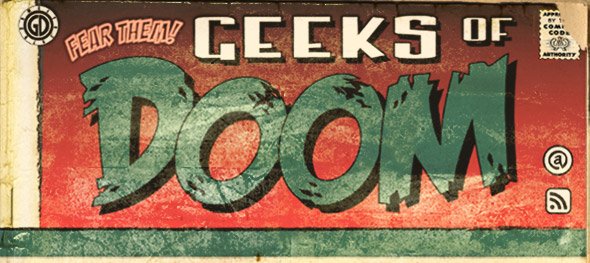
Gilliamesque: A Pre-posthumous Memoir
Hardcover | Kindle Edition
By Terry Gilliam
Canongate Books | Harper Design
Publication Date: October 1, 2015
Cover Price: $22.00
Terry Gilliam, entertainment renaissance man, pioneer illustrator, and cinema auteur, who was the key force behind the absolutely bizarre and hilarious animation in Monty Python’s Flying Circus, has recently released an autobiography in which he tries to make sense of his wild, sprawling, and utterly successful life career, titled Gilliamesque: A Pre-Posthumous Memoir.
The title is a play on the word Pythonesque, which has pretty much entered the lexicon of language the last few years when describing a piece of humor which pushes envelopes and knows no bounds, like much of the zany oeuvre the madcap Englishmen manifested during their heyday of the late ’60s to the early ’70s. And for someone like Terry Gilliam, who just recently celebrated his 75th birthday a few weeks ago, it’s a term befitting of a man of his social, creative, and influential stature.
Bound in a nice package with thick hardcover and a ragged and charming look which is to be expected of a Python incarnate, right down to the crude repetition of the word “me” written ad nauseum in red ink and all over top, bottom, and sides of the book, at face value, Gilliamesque is a sight to behold. Like some of the best Python books, there’s a slight off-kilter feel and approach to the entire proceedings, and even just at a first glance of the cover and back cover without even looking at the inside contents, the prospective reader knows they are in for something special and downright strap-yourself-in eclectic and bizarre.
And inside, that charm continues wholeheartedly. Clearly this is a passion project not only for its colorful subject, but also for the fans — and there are lots of them for Gilliam, some who have followed him since his beginnings as an illustrator. Even at that young age, Gilliam had possessed and exhibited a massive propensity for genius artistic renderings right out of Dr. Seuss, Wallace Wood, and Salvador Dali, but with a style all his own and one in which he took the cues from one of his mentors (as did most of his peers at the time) one Harvey Kurtzman, who almost singlehandedly edited Mad Magazine into the form, shape, and style recognized today. Kurtzman had a flair for a professional lunacy, one in which he was able to marry his keen sense of illustration with a warped mind, and was without question one of the true illustrative figures of the mid 20th Century (as was Mad peers like Jack Davis, Will Elder, and the aforementioned Wood).
Gilliam took everything he learned from Kurtzman and became his own name rather quickly. Once he latched onto becoming the only American member of Monty Python and having the skill to be able to liberate himself from just the drawing board and perform in sketches with the troupe, he stood out as his own creative right just as much as the five other heavyweight talents who made up the group. All of this subject matter makes for rich personal discussion in Gilliamesque and he pulls no punches anecdotally in a breezy, razor-sharp, and conversational manner expounding on all of the above. The book becomes a jam-packed volume of Gilliam’s history, technique of animation, time in Monty Python as co-director (with Terry Jones) of their films like The Holy Grail, Life of Brian, and Meaning of Life, and directing films on his own (The Fisher King, Time Bandits, 12 Monkeys, Brazil, etc), and the reunions with Python.
It’s done in a great, sloppy-but-that’s-the-point kind of art design throughout, with rare and well-known pictures of Gilliam and his work, art, and life seemingly placed anywhere on pages and pages in the tome, in which “captions” are almost unintelligible scrawled little bits of info in Gilliam’s handwriting. The best one for sure has to be simply the famous Python “foot of Cupid,” in which Gilliam had extracted from the vintage painting Venus, Cupid, Folly, and Time which artist Agnolo Bronzino had painted in the 1500s, in which Gilliam writes, “If You Want To Kick Down The Doors Of Perception, You Need A Bronzino Foot.” That line, and scores of others, are included in what is a fun, great read, just enough for a casual reader and fan of Gilliam and plenty for the Pythonphile and all in between. The man’s story is fascinating enough and his eyewitness and I was there testimonials about his life in Python, prior and post and reunion, are fascinating and insightful and witty even to someone who wouldn’t be familiar with Terry Gilliam’s decade and even century spanning body of work.
Gilliamesque is a great addition to any collection, certainly to the fan of Monty Python and Gilliam’s vivid cinematic pedigree. Terry Gilliam remains a force of bizarre, unbridled nature and electric unorthodoxy in everything he does, and he remains because of it, breathtakingly fresh in his approach in everything his mind’s eye touches. One of the more famous Monty Python tag lines is “And Now For Something Completely Different.” In an unconscious way then and a most conscious way now, that line is one that almost completely makes up the fabric of what and who Terry Gilliam was, is, and continues to be, something completely different indeed, and in only the best and most influential ways possible.








No Comments »
No comments yet.
RSS feed for comments on this post. TrackBack URL
Leave a comment